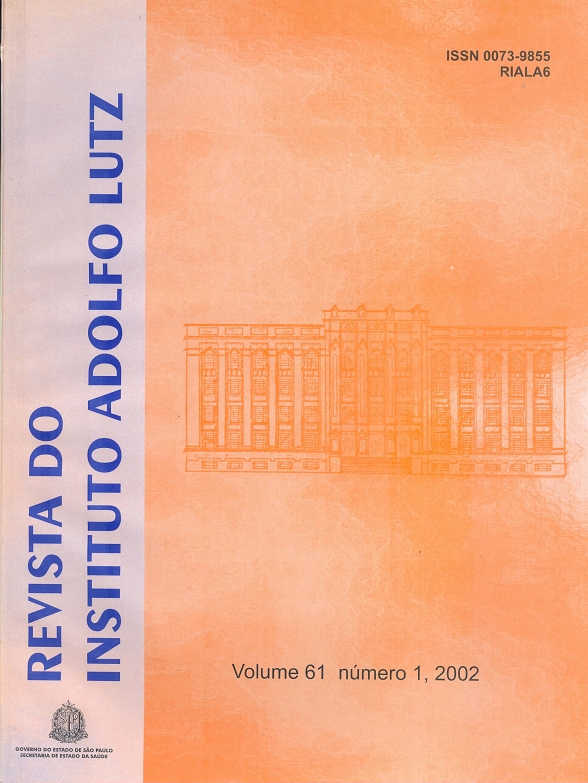Abstract
Consumption of bottled mineral water in Brazil has increased over the past year, due to its convenience and relative safety. The quality of water is affected by the structure of the water network, the pipe and the treatment of water that sometimes could change its taste. The mineral and inorganic
contaminants levels of 69 samples of bottled mineral water were investigated by Atomic Absorption Spectrometry (AAS) and Inductively Coupled Plasma Optical Emission Spectrometry (ICP OES). The
concentrations of mercury, lead, cadmium, copper, iron and phosphorus were below the limit of quantification. 17 % of the domestic sample brands were in accordance with the label and for the imported ones, all the samples agree or were in conformity with the label. 63 % of the domestic mineral water failed to comply with the Brazilian new legislation about bottled mineral water labelling. In conclusion, the analysed samples were proper to consumption.
References
1. Albu, M.; Banks, D.; Nash, H. Mineral and thermal groundwater resources. London: Chapman and Hall, 1997, p. 447.
2. APHA – AWWA – WEF: Standard Methods for the Examination of water and wastemater (ed. 18). Washington, DC, American Public Health Association, 1992, p 1-1/4-138.
3. Barret, J. H.; Parslow, R. C.; McKinney, P. A.; Law, G. R.; Forman, D. Nitrate in drinking water and the incidence of gastric, esophageal, and brain cancer in Yorkshire, England. Cancer causes control. 9/2: 153-159, 1998.
4. Brasil. DNPM. Departamento Nacional de Produção Mineral. Anuário Estatístico do Setor Metalúrgico 2001. Disponível em: www.mme.gov.br. Acesso em: 04 maio 2001.
5. Brasil. Leis, Decretos, etc. – Portaria n º 36, de 19/01/90. O Ministério da Saúde aprova normas e padrões de potabilidade de água destinada ao consumo humano Diário Oficial, Brasília, 23 de janeiro de 1990, Seção I, p. 1651-1654.
6. Brasil. Leis, Decretos, etc. – Portaria n º 470, de 24/11/99. O Ministério de Minas e Energia institui as características básicas dos rótulos das embalagens de águas minerais e potáveis de mesa. Diário Oficial, Brasília 24 de novembro de 1999, Seção I – E.
7. Brasil. Leis, Decretos, etc. – Resolução – RDC no 54, de 15 de junho de 2000. Regulamento técnico para fixação de identidade e qualidade de água mineral natural e água natural. Diário Oficial, Brasília 19 de junho de 2000, Seção I, p. 37-38.
8. Brasil. Ministério da Saúde – Comissão Nacional de Normas e Padrões para Alimentos (C.N.N.P.A) – Resolução n º 25/76, Diário Oficial, Brasília, 03 de fevereiro de 1977.
9. Campillo, N.; Viñas, P.; García, I. L.; Córdoba, M. H. Rapid determination of lead and cadmium in biological fluids by electrothermal atomic absorption spectrometry using Zeeman correction. Anal. Chim. Acta. 390: 207-215, 1999.
10. Clarkson, T. W. The toxicology of mercury. Crit. Rev. Clin. Lab. Sci. 34/4: 369-403, 1997.
11. Currie, L. A. – Nomenclature in Evaluation of Analytical Methods Including Detection and Quantification Capabilities (IUPAC Recommendations ). Pure & Appl. Chem. 67 (10), p. 1669-1723, 1995.
12. Evandri, M. G.; Bolle, P. Pharmaco toxicological screening of commercially available Italian natural mineral waters. Il Farmaco. 56: 475-482, 2001.
13. Ghersetich, I.; Brazzini, B.; Hercogova, J.; Lotti, T. M. Mineral waters: instead of cosmetics or better than cosmetics? Clin. Dermatol.. 19: 478-482, 2001.
14. Hilts, S.R.; Bock, S.E.; Oke, T.L.; Yates, C.L.; Copes, R.A. Effect of Interventions on Children’s blood lead levels. Environ. Health Perspec. 106 (2): 79-83, 1998.
15. Misund, A.; Frengstad, B.; Siewers, U.; Reimann, C.Variation of 66 elements in European bottled mineral waters. Sci. Total Environ. 243/244: 21-41, 1999.
16. Nishihara, L.; Alaburda, J.; Maio, F.D. Características físico-químicas das águas de fontes minerais da região da Grande São Paulo. Rev. Inst. Adolfo Lutz, 57 (2): 19-25, 1998.
17. OMS - Organização Mundial de Saúde. Elementos Traço na Nutrição e Saúde Humanas, São Paulo, Roca, 1998, p. 297.
18. Pedro, N.A.R.; Freitas, V.P.S.; Badolato, M.I.C.; Oliveira, E. – Determinação de metais em águas minerais na região de Campinas, Estado de São Paulo, Quím. Nova, 14(4):108-109, 1991.
19. Pip, E. Survery of bottled drinking water available in Manitoba, Canada, Environ. Health Perspec. 108 (9), 2000.
20. Pirkle, J.L.; Kaufaman, R.B.; Brody, D. J.; Hickman, T.; Gunter, E.W.; Paschal, D.C. Exposure of the U.S. population to lead, 1991-1994. Environ. Health Perspec. 106 (11): 745-750, 1998.
21. Subramanian, K. S. Determination of lead in blood by graphite furnace atomic absorption spectrometry – a critique. Sci. Total Environ. 89: 237-250, 1989.
22. Subramanian, K. S.; Meranger, J. C. A rapid electrothermal atomic absorption spectrophotometric method for cadmium and lead in human whole blood. Clin. Chem. 27/11: 1866-1871, 1981.
23. Yen, C. C.; Chen, W. K.; Hu, C. C.; Wei, B. L.; Chung, C.; Kuo, S. C. Lead determination in whole blood by graphite furnace atomic absorption spectrometry. Atom. Spectr. 18(2), March/April, 1997.
24. Wolfe, M. E.; Schwarzbach, S.; Sulaiman, R. A. Effects of mercury on wildlife: a comprehensive review. Environ. Toxicol. Chem. 17/2: 146-160, 1998.
25. Zacheus, O. M.; Martikainen, P. J. Physicochemical quality of drinking and hot waters in Finnish buildings originated from groundwater or surface water plants. Sci. Total Environ., 204: 1-10, 1997.

This work is licensed under a Creative Commons Attribution 4.0 International License.
Copyright (c) 2002 Revista do Instituto Adolfo Lutz
